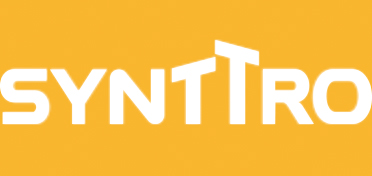From/Bossmagazine
By/Holly Welles

Construction is one industry among many that’s seeing the negative impacts of the COVID-19 pandemic. Job sites around the globe are shutting down, and those that remain open are subject to strict social distancing restrictions to prevent the spread of the virus.
Thankfully, new technologies are allowing some construction-related tasks to leave the job site in favor of remote work. How can construction managers take advantage of these new technologies and enable remote work for their teams?
Utilize Cloud-Based Communication
Many different cloud-based communication tools are available for construction managers and owners. So many exist that it can be difficult for managers to know where to begin or how to find the best tools for their crew.
While cloud-based communication is vital in remote work — especially in the construction industry — it’s just as essential to ensure everyone is on the same page. That means everyone knows what programs they’re supposed to use. It also means every person on the team is using the same settings and equipment to ensure communication is smooth and seamless.
Remote work in any industry can only succeed if the entire team stays in touch. Daily check-ins will be essential — especially in the first few weeks — as everyone adapts to their new normal. Social distancing requirements will preclude face-to-face meetings for some time, and many construction companies may find themselves laying off workers. However, these technologies can help keep people working, even if job sites are closed for the duration of this crisis.
Try Comprehensive Software Tools
While communication may provide the foundation for remote work in construction, it isn’t the only tool managers and supervisors will need to keep their teams working remotely. Construction management software will also play a major role in this move toward remote assignments.
Construction management software — especially comprehensive software systems — can provide managers and supervisors with the tools they need for collaboration. That point is true even if they can’t enter the job site due to social distancing rules. Everyone can continue sharing ideas over their devices by using accessible software.
Business center programs allow managers to make comprehensive 3D models of the site, which they can update as they start different pieces or complete jobs. Planning software systems can even use drones to map a worksite before and after construction or to inspect the location mid-project. While everything is closed and people are working remotely, drones can investigate shut-down projects to ensure they aren’t sustaining damage from the weather or vandals.
Build Technical Support Systems
One thing team leaders can’t overlook is the need for technical support systems as teams make the transition to remote work. Not everyone has top-of-the-line equipment at home — or can afford a substantial purchase like that in this time of financial uncertainty. That might make it difficult for them to connect to the rest of the team or communicate remotely.
While companies are upgrading their internal networks to support additional remote traffic, it is a good time to invest in the employees as well. Some companies, like Ferry Electric in the U.S., are offering to reimburse their employees for any money spent on upgrading their home computer systems. When people might be worried about where their next paycheck is coming from, this can be a useful tool to ensure team members stay connected.
Use Remote Management Tools
Monitoring each person on a massive construction site is a challenge on the best of days. In today’s world, where many job sites are closed to slow the coronavirus, remote management tools will become one of the most important items on a construction manager’s tool belt. Remote management systems give managers and supervisors the tools to do everything from tracking employee’s hours remotely to studying on-site progress in real-time.
These tools allow them to streamline much of the process, eliminating the need for things like paper timesheets — which will be awkward to manage during the social distancing age — and manual tracking logs.
Remote managing tools are also useful for work-from-home teams in addition to project managers. These systems provide a collaborative cloud-based platform that anyone with the right log-in information can access, regardless of where they are in the world.
This kind of technology can connect teams even if they’re miles apart from each other. Implementing these tools may be the best solution moving forward, even after the current crisis has abated, for managers who need to track enormous teams spread out across the country. Remote tech solutions can remove the hassle and confusion of trying to reach out to numerous employees who all live in different regions.
Remote Transitions for the Construction Industry
The best advice for builders, construction managers, supervisors and anyone else who is making a foray into the world of remote work is to be patient. This technology has existed for a while, but using it is new for a lot of industries. Construction, in particular, is not one sector most people associate with the ability to work remotely. It will take some trial and error to figure out the best way to connect employees and managers and progress through the current crisis.
One thing is sure — this situation won’t be permanent. It could take a few weeks or months, but eventually, construction workers will be back on their job sites, creating marvels of architecture. In the meantime, remote work is the order of the day, and everyone will need to adapt to succeed.
